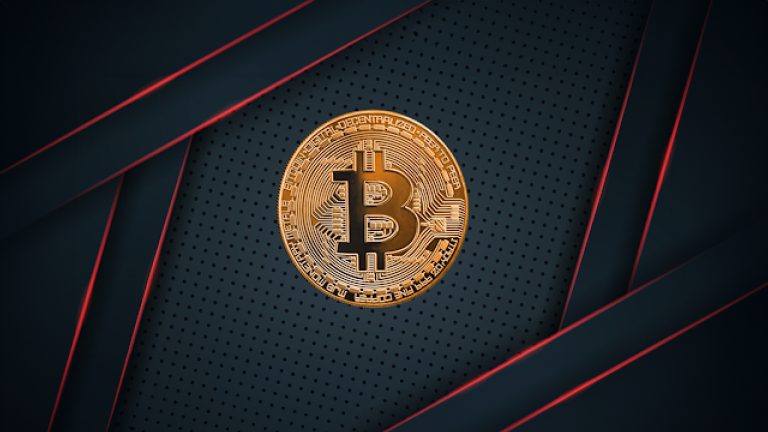 The Nasdaq-traded company specializing in bitcoin mining, Bitdeer, has unveiled its strategy to boost its overall hashrate by an additional 3.4 exahash per second (EH/s) through the deployment of its proprietary Sealminer A1 mining devices. These advanced rigs are slated for setup within Bitdeer’s mining facilities located in Texas and Norway, targeting the latter half […]
The Nasdaq-traded company specializing in bitcoin mining, Bitdeer, has unveiled its strategy to boost its overall hashrate by an additional 3.4 exahash per second (EH/s) through the deployment of its proprietary Sealminer A1 mining devices. These advanced rigs are slated for setup within Bitdeer’s mining facilities located in Texas and Norway, targeting the latter half […]
The U.S. Securities and Exchange Commission (SEC) is reportedly asking firms that have bid to create Bitcoin (BTC) exchange-traded funds (ETFs) to complete last-minute corrections before the start of 2024. According to a new report by Reuters, anonymous sources familiar with the matter say the regulatory agency met with representatives of companies that applied to […]
The post U.S. SEC Asks Firms Applying for Spot Bitcoin ETFs To Complete Last-Minute Corrections Before New Year: Report appeared first on The Daily Hodl.

Earlier in the day, BlackRock registered corporate entity “iShares Ethereum Trust” in Delaware, the first hint that a filing for a spot Ethereum ETF filing was imminent.
Blackrock’s plans for a spot Ethereum exchange-traded fund (ETF) has now been confirmed, per a 19b-4 form filing submitted to the United States Securities and Exhange Commission on Nov. 9.
Nasdaq filed the 19b-4 form to securities regulator on behalf of the $9 trillion asset management firm for a proposed ETF called the "iShares Ethereum Trust."
The move signals BlackRock’s intention to expand beyond Bitcoin with its ETF aspirations.

Earlier on Nov. 9, it emerged that BlackRock registered corporate entity iShares Ethereum Trust in Delaware, the first hint that a spot Ethereum ETF filing could be imminent.
UPDATE: BlackRock #Ethereum ETF confirmed. They just submitted a 19b-4 filing with Nasdaq pic.twitter.com/pLhuhhK7jo
— James Seyffart (@JSeyff) November 9, 2023
BlackRock and other financial firms have expressed interest in cryptocurrency-backed ETFs over the last few months.
Bloomberg ETF analyst James Seyffart noted that there are at least five firms in the running to win the Securities and Exchange Commission’s approval for a spot Ethereum ETF.
Related: Ethereum futures ETFs garner lukewarm reception on first day of trading
Among them are VanEck, ARK 21Shares, Invesco, Grayscale and Hashdex.
There are 5 other live spot Eth filings that i'm aware of:@vaneck_us @ARKInvest/ @21Shares @hashdex @InvescoUS/ @galaxyhq
— James Seyffart (@JSeyff) November 9, 2023
andddd @Grayscale's filing to convert $ETHE.
In no particular order.
Ether (ETH) spiked 8.9% to $2080 on the news that BlackRock is moving forward its plans for an iShares Ethereum Trust and is up 10.1% over the last 24 hours, according to CoinGecko.

The price surge has helped ETH claw back some market dominance against Bitcoin (BTC), which has outperformed ETH in recent months.
ETH’s market dominance now sits at 17%, up 1.3% percentage points prior to the news.

A widely followed crypto analyst says that Bitcoin (BTC) is entering an “explosive” phase as the king crypto’s long-term metrics reverse course. In a new thread, pseudonymous crypto strategist TechDev tells his 420,200 followers on the social media platform X that one signal comes around every 3-3.5 years which points to “several months” of growth […]
The post Bitcoin Now Entering ‘Explosive’ Phase As Several Long Term Indicators Flip Bullish for BTC: Crypto Analyst appeared first on The Daily Hodl.

The stock market declined on October 12 as the US BLS released new data showing prices rose faster than expected.
October 12, 2023
Stocks fell in the US today as newly released inflation data overshot expectations. The Dow Jones Industrial Average fell by 173.73 points (0.51%), to 33,631.14. The S&P 500 declined by 27.34 points (0.62%), ending the day at 4,349.61. The tech-heavy Nasdaq index lost 85.46 points (0.63%), declining to 13,574.22.

At 8:30 am ET, the US Bureau of Labor Statistics released Consumer Price Index data for the month of September. It showed that prices increased 0.4% over the course of the month and 3.7% in the year preceding October 1. This was higher than the 0.3% for the month and 3.6% year-over-year estimated by Dow Jones. Traders interpreted the higher-than-expected figure as bearish for equities, as it could imply that the Federal Reserve will need to keep interest rates elevated for longer than previously expected as they attempt to keep inflation under control.
Despite this decline in the overall market, shares of some retail-sector companies did unusually well. Wallgreens gained 7% after it reported that its losses had not been as great as previously expected, and Dollar General stock surged by nearly 10% after-hours as the company announced that former CEO Todd Vasos will return to the company.
US Treasury yields rose as traders digested the new inflation data. The 10-year note gained 0.102 points, reaching 4.699%. The two-year gained 0.066 points, rising to 5.071%.
Gold fell by $6.52 per Troy Ounce, to 1,868.93. Gold has been trending down since May 4, when it peaked at $2,060.60. Since then, concerns about rising interest rates and a strong dollar have kept the yellow metal in decline.

Oil gained slightly today, with West Texas Intermediate adding a penny per barrel (0.012%) to its price to reach $83.50. Brent crude gained $0.56 (0.65%) per barrel to reach $86.38.
In the forex market, the US Dollar Index rose 0.76 points, to 106.58. The euro fell 0.85% to $1.0528. The yen fell 0.47%, causing the number of yen needed to buy a dollar to rise to 149.7720. Many traders believe that Japanese monetary authorities will intervene if this number rises above 150.
Information for this news item was sourced from Apmex, CNBC, MSN Money, Yahoo Finance, and Business Insider.
Vintage Markets is dedicated to the in-depth exploration and reporting of traditional financial news, tracing the journey of global markets and economies from the Stone Age to the Stoned Age.

All US stock indices rose on October 11, as traders awaited consumer price index data to be released on the 12th.
October 11, 2023
US stocks rose for the fourth day in a row today, as traders waited for the consumer price index report to be released on October 12. The Dow Jones Industrial Average increased by 65.57 points (0.19%), to 33,804.87. The S&P 500 gained 18.71 points (0.43%), closing at 4,376.95. The Nasdaq went up by 96.83 points (0.71%), ending the day at 13,659.68.

Despite today’s uptick, stock prices are lower than they were in July, as fears of interest rate increases have dominated the market narrative since then. Bears expect inflation to rise faster than anticipated, causing the Fed to respond with more rate hikes, while bulls are more optimistic that inflation will stay under control and not require interest rates to rise much further. The Bureau of Labor Statistics is expected to release inflation data for September tomorrow. Economists surveyed by Dow Jones have estimated that the US experienced an inflation rate of 0.3% in the month.
Minutes for the September Federal Open Market Committee meeting were released today, revealing that the majority of members expect that at least one more rate hike will be needed this cycle, although some members disagreed with this majority viewpoint. All members agreed that rates will need to remain high until sufficient evidence proves that inflation is moving back to 2% per year.
The 10-year and two-year US Treasury yields moved in opposite directions over the course of the day. The 10-year fell by 0.1 points, to 4.564%. The two-year rose by 0.002 points, to 4.986%. The yield-curve remains inverted, which some traders view as a sign of an impending recession.
Despite the Fed’s talk of interest rate increases, gold traders remained bullish. Gold gained $13.81, rising to $1,873.56 per Troy Ounce.
Oil declined, with West Texas Intermediate falling $2.62 per barrel, to $83.33 and Brent crude falling $2.03 per barrel, to $85.62. Oil surged over 4% on Monday, when traders began to fear that new Iran sanctions may be imposed due to the Israel-Hamas conflict. However, it began to slip back to lower levels on Tuesday after Iran denied involvement in the conflict, and this decline has continued today.

In the forex market, the US Dollar Index fell 0.1%, to 105.73. The euro rose 0.1275%, to 1.0622. The yen fell 0.2777%, causing the number of yen needed to buy a dollar to rise to 149.1180. Some traders expect the Bank of Japan to intervene if this number rises above 150.
Information for this news item was sourced from CNBC, Marketwatch, Kitco, Business Insider and MSN Money.
Vintage Markets is dedicated to the in-depth exploration and reporting of traditional financial news, tracing the journey of global markets and economies from Stone Age to Stoned Age.

Treasury yields declined, giving stock market bulls new momentum.
October 10, 2023
Stocks in the US rose for the third straight day as the market continues to assess the effect of the Israeli-Hamas conflict. Bond yields fell as investors desired the safety of US Treasuries, and these falling yields helped to bolster the stock market. Today was the first day that Treasuries have been traded since the start of the Israeli-Hamas conflict, as the bond market was closed on Monday.
The Dow rose 134.65 points (0.4%), to 33,739.30. The S&P 500 gained 22.58 points (0.5%), reaching 4,358.24. The Nasdaq climbed 78.61 points (0.6%), ending the day at 13,562.84.

The yield on the US 10 Year Treasury Note fell 0.149 points, to 4.655%, and the 2-year note fell 0.148 points, to 4.961%. The yield on a Treasury Note is inversely related to its price, so a falling yield implies a rising price for it. Stocks have been under pressure since July, as continuously rising yields have attracted investors to Treasuries instead of stocks, but today’s pullback in yields was seen as a welcome relief by stock market bulls.
Oil prices declined as war-related fears began to wane. West Texas Intermediate crude fell by $0.59 per barrel, to $85.79, while Brent crude declined by $0.03, to $87.62. Over the weekend, some traders had begun to fear renewed sanctions against Iran, which could reduce supply and drive up prices. But Iran denied involvement on Monday, which gradually began to reduce these expectations.
Gold prices saw a reduction of $0.79 per Troy Ounce, falling to $1,860.48. Despite an early dip, a rally emerged around 10:30 am ET, enabling gold to recover a significant portion of its earlier losses.

The US Dollar Index rose 0.29%, to 105.77. The euro gained 0.3852%, ending up at 1.0606. The yen fell 0.1%, causing the number of yen needed to buy a dollar to rise to 148.6660.
Vintage Markets is dedicated to the in-depth exploration and reporting of traditional financial news, tracing the journey of global markets and economies from Stone Age to Stoned Age.

The Dow and S&P 500 fell early in the day, but rebounded to end the day positive.
October 9, 2023
US markets demonstrated resilience on Monday, initially succumbing to concerns over the escalating Israeli-Gaza conflict, but rebounding later to close in the green. The Dow closed up 0.5%, at 33,604.65. The S&P 500 rose by 0.6%, reaching 4,335.66. The tech-heavy Nasdaq went to 13,484.24, a gain of 0.4%. The S&P was down slightly at 10:50 a.m. ET, having fallen from 4281.91 to 4285.73, a loss of 3.852 points, but this loss was erased by the end of the day. The other two indices made similar moves down, then up.

Over the weekend, Palestinian militant group Hamas launched an attack against Israel. The new outbreak of war caused some traders to fear volatility will rock the market, causing a bearish sentiment to take hold early on. However, these fears were largely shrugged off over the course of the day. Defense-related companies surged, with Lockheed Martin gaining 8.5% and Northrop Grumman Corp gaining 11%. Oil producers also gained thanks to a belief that high oil prices are coming.
Gold was buoyed by the turmoil, rising $13.59 (0.74%), to $1,861.53.

Oil also rose today, with West Texas Intermediate hitting $86.29, a gain of 4.24% on the day. Brent crude rose to $88.05, a gain of 4.09% on the day. GasBuddy issued a report stating that US gasoline prices have declined by $0.11 per gallon, but this was mostly overlooked and failed to stop the war-driven oil rally.
The US Dollar Index rose by 0.03%, to 106.08. In tandem with the rise in the dollar, the euro fell 0.2220%, to 1.0566. The yen gained 0.5138%, bringing the number of yen needed to buy a dollar to 148.5070. The yen has been trading sideways since September 25, when the Bank of Japan stated that it would intervene if the currency fell much further. Prior to that date, it had lost 13% of its value since the start of the year.
Information for this news item was sourced from CNBC, OilPrice, Yahoo Finance, MSN Money, and Marketwatch.
Vintage Finance is dedicated to the in-depth exploration and reporting of traditional financial news, tracing the journey of global markets and economies from Stone Age to Stoned Age.

Known as the Hashdex Nasdaq Ethereum ETF, this investment fund is the first filing for futures and spot Ether holdings under the ‘33 Act and is overseen and supervised by Toroso Investments.
The Nasdaq stock exchange has submitted an application to the Securities and Exchange Commission (SEC) seeking approval to list an Ethereum Exchange-Traded Fund (ETF) offered by Hashdex, an asset management company. This ETF is designed to include a combination of spot ether holdings and futures contracts in its portfolio and pioneering a new approach to cryptocurrency investment within the regulatory framework.
Known as the Hashdex Nasdaq Ethereum ETF, this investment fund is the first '33 Act Ethereum futures filing of futures Ethereum under the ‘33 Act and is overseen and supervised by Toroso Investments. Toroso Investments is registered as a commodity pool operator with the Commodity Futures Trading Commission (CFTC) and is also a member of the National Futures Association.
The current surge in cryptocurrency ETF applications has placed significant emphasis on whether the proposed funds intend to include futures contracts or spot assets. While the SEC has granted approval for the former, the latter remains unapproved. Fund managers appear to be exploring a middle-ground option, testing their chances in this regulatory landscape.
The primary investment goal of the Hashdex fund is to ensure that its shares mirror the daily fluctuations in the Nasdaq Ether Reference Price. To achieve this objective, the fund intends to allocate its assets to investments in ether, ether futures contracts traded on the CME, as well as cash and cash equivalents. Nasdaq said in the 19b-4 form:
"Instead of holding 100% spot Ether, which could make it more susceptible to price manipulation in the spot market, the Fund will hold a mix of Spot Ether, Ether Futures Contracts, and cash,"
The Fund aims to decrease its reliance on the spot market and address worries regarding potential manipulation in unregulated Ether spot exchanges by including Ether Futures Contracts and cash in its holdings, it elaborated.
Related: Franklin Templeton files for spot Bitcoin ETF
Hashdex joined the competition for a spot Bitcoin (BTC) exchange-traded fund in the United States. However, Hashdex’s approach differs from recent filings as it won’t depend on the Coinbase surveillance sharing agreement, opting to acquire spot Bitcoin from physical exchanges within the CME market.
In the previous week, both Ark Invest and 21Shares submitted applications to the SEC for a spot ether ETF, a type of ETF also being pursued by VanEck. The SEC has thus far deferred its determinations on all the applications it has received for spot cryptocurrency funds.
Collect this article as an NFT to preserve this moment in history and show your support for independent journalism in the crypto space.
Magazine: Crypto regulation: Does SEC Chair Gary Gensler have the final say?